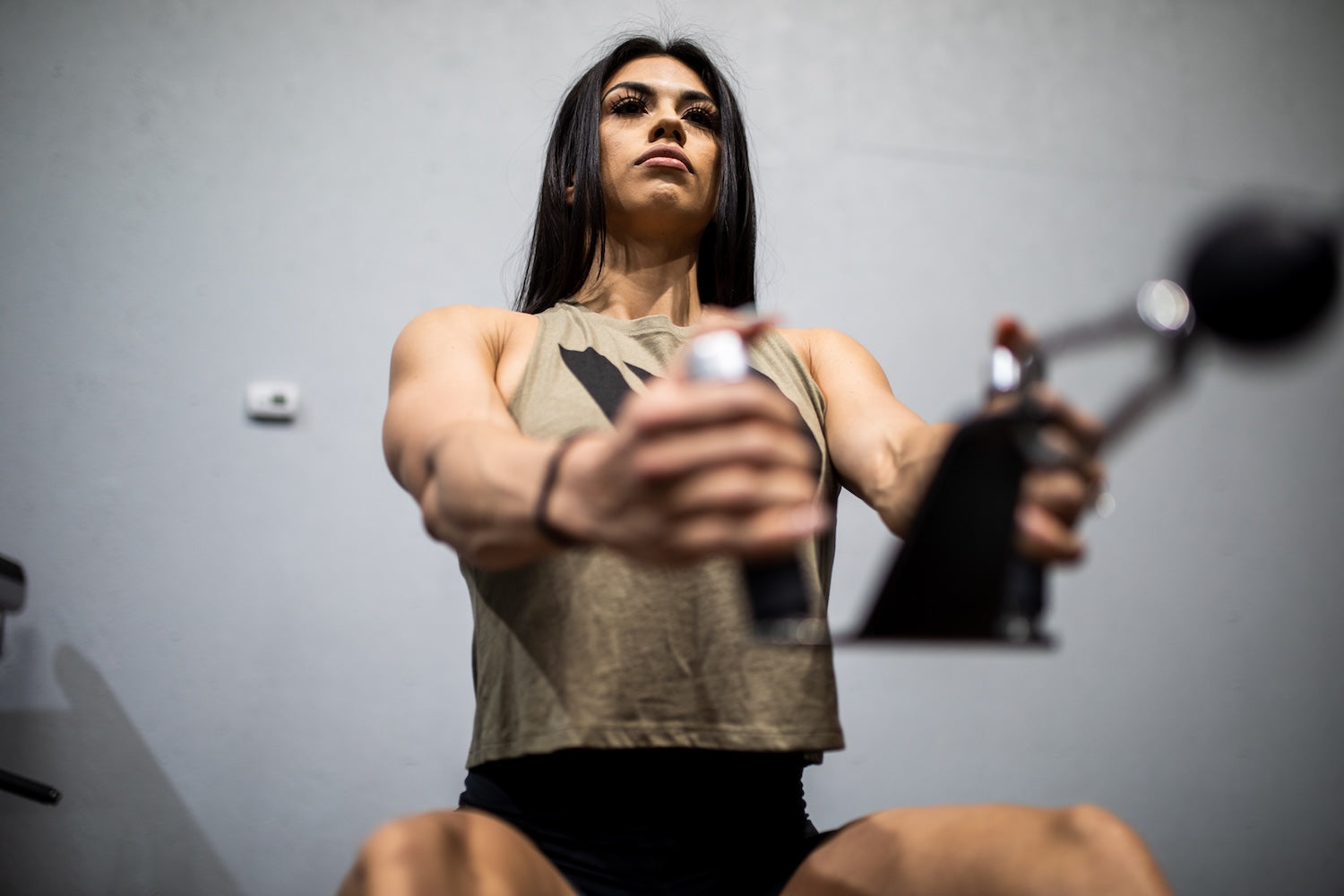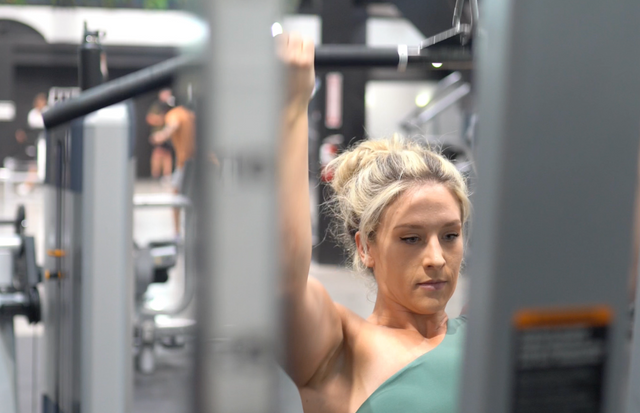If you're serious about building a wide, strong, and defined back, the wide grip cable row is non-negotiable. This powerhouse pulling exercise doesn't just add mass to your upper back—it improves posture, enhances functional strength, and corrects muscular imbalances that could be holding you back in performance and aesthetics.
Whether you're an athlete, powerlifter, or someone simply looking to sculpt a V-taper physique, this guide will teach you everything you need to know to master the wide grip cable row. From its biomechanics to mistake-proofing your form, let’s break it down step by step so you can unlock your full strength potential—one rep at a time.
What Is the Wide Grip Cable Row?
The wide grip cable row is a compound resistance training exercise that primarily targets the upper back, specifically the trapezius, rhomboids, and rear deltoids, while also engaging the latissimus dorsi, biceps, and core stabilizers. It’s performed using a cable machine with a wide grip bar attachment, allowing for a greater range of motion across the shoulder girdle compared to close or neutral grip rows.
Unlike free-weight rows, the cable machine provides constant tension throughout both the concentric (pulling) and eccentric (lowering) phases of the movement. This continuous resistance makes the wide grip cable row an excellent tool for muscle hypertrophy, postural correction, and back symmetry.
The defining feature of this row variation is the hand placement—typically wider than shoulder-width with an overhand (pronated) grip.
Benefits of Wide Grip Cable Rows for Back Development
The wide grip cable row targets major muscle groups across the upper and mid-back. Because of the cable’s continuous tension, you’re stimulating your muscles through the entire range of motion—boosting hypertrophy, improving muscle activation, and reducing momentum.
1. Upper Back Hypertrophy
The wide grip shifts emphasis to the trapezius, posterior deltoids, and rhomboids, forcing these muscles to work harder than in narrow grip or dumbbell rows. This leads to a thicker, broader back and increased shoulder stability.
"Wide grip pulling movements result in greater electromyographic activity in the upper trapezius and rear deltoids compared to close-grip variations." – Signorile et al., Journal of Strength and Conditioning Research
2. Postural Correction
In today’s forward-leaning world of screens and desk jobs, wide grip rows help reverse chronic slouching. They strengthen the muscles responsible for scapular retraction and thoracic extension, supporting proper posture and spinal alignment.
"Strengthening posterior chain musculature reduces the prevalence of forward head posture and rounded shoulders." – Kendall et al., Muscles: Testing and Function
3. Enhanced Functional Strength
A strong upper back plays a pivotal role in compound lifts like squats and deadlifts, as well as functional movement patterns like climbing, rowing, and throwing. Wide grip cable rows develop the musculature that transfers to both athletic performance and injury prevention.
"Upper back strength is essential for force transmission during athletic movements and for supporting spinal stability under load." – McGill, Low Back Disorders
Anatomy of the Muscles Engaged
-
Latissimus Dorsi: Provides width and lateral spread to the back.
-
Trapezius (Upper and Middle Fibers): Elevates and retracts the scapula.
-
Rhomboids: Assist in scapular retraction and stabilization.
-
Posterior Deltoids: Aid in horizontal pulling and shoulder alignment.
-
Erector Spinae & Core: Engage to maintain posture and prevent lumbar strain.
Understanding which muscles are involved helps you fine-tune your form and mind-muscle connection for better results and balance.
How To Wide Grip Cable Row
Proper Form and Technique for Wide Grip Cable Rows
-
Set Up: Sit at the cable row machine. Place your feet on the platform with a slight bend in your knees.
-
Grip: Grab the wide grip bar using an overhand grip, hands positioned wider than shoulder-width.
-
Posture: Keep a neutral spine, chest up, and shoulders down and back.
-
Pull: Initiate the movement by pulling your elbows back and squeezing your shoulder blades together.
-
Control: Slowly return the bar to the starting position, maintaining tension in your upper back.
-
Breath: Exhale during the pull, inhale on the return.
Avoid leaning back excessively or using momentum. The movement should come from the scapular retraction, not the lower back or arms.
Common Mistakes to Avoid
-
Using Too Much Weight: Prioritize form and full range of motion over heavy loading.
-
Neglecting Scapular Retraction: Pulling with your arms alone reduces lat and trap activation.
-
Leaning Back Too Far: This recruits your lower back instead of isolating the upper back.
-
Short Range of Motion: Ensure a full stretch at the start and a full squeeze at the top for maximum benefit.
Variations of Wide Grip Cable Rows
Changing angles or positions can help emphasize different areas of your back:
-
Seated Incline Wide Row: Targets upper traps and rear delts more directly.
-
Standing Wide Grip Row: Introduces greater core activation.
-
Kneeling Single-Arm Wide Row: Improves unilateral strength and cross-body stability.
-
Reverse Grip Wide Row: Shifts tension slightly to the lower lats and biceps.
"Exercise variation is a key factor in breaking plateaus and achieving balanced muscle development." – Fonseca et al., European Journal of Applied Physiology
Incorporating Wide Grip Cable Rows into Your Program
Wide grip cable rows can be used as a primary compound movement or a secondary hypertrophy finisher:
-
Perform early in your back workout for strength and size gains
-
Pair with pull-ups, deadlifts, and face pulls for a complete upper back routine
-
Include in upper body push/pull splits or back-specific days
Recommended Sets and Reps
| Goal | Sets | Reps | Rest |
|---|---|---|---|
| Hypertrophy (Growth) | 3–4 | 8–12 | 60–90 sec |
| Strength | 4–5 | 4–6 | 2–3 min |
| Endurance/Conditioning | 2–3 | 15–20 | 30–60 sec |
Complementary Back Exercises
To balance your upper and lower back development, pair wide grip cable rows with:
-
Pull-Ups or Chin-Ups – For vertical pulling and lat width
-
Barbell Bent-Over Rows – For mid-back and spinal erector engagement
-
Face Pulls – To strengthen rear delts and improve shoulder health
-
Deadlifts or Rack Pulls – To develop posterior chain and spinal loading tolerance
Conclusion: Why Wide Grip Cable Rows Belong in Your Back Routine
If you're after a back that's strong, symmetrical, and built for performance, wide grip cable rows deliver the results. They’re not just for bodybuilders—they’re for anyone who values structural balance, injury prevention, and pulling power.
Mastering this exercise gives you more than muscle—it builds the foundation for every other movement in your training. With proper form, strategic programming, and progressive overload, you’ll see gains not just in size, but in strength, posture, and performance.
Train smart. Row wide. And watch your back transform.
Let me know if you want this content formatted as a downloadable PDF, made into an email series, or turned into an infographic or carousel post for Instagram.
Find similar articles:
Fitness






